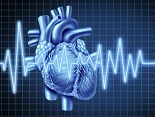Ellagic Acid Protects Cardiac Arrhythmias Following Global Cerebral Ischemia/Reperfusion Model
DOI:
https://doi.org/10.31661/gmj.v8i.1235Keywords:
Ellagic Acid, Ischemia/Reperfusion, ArrhythmiasAbstract
Background: Cerebral ischemia/reperfusion (I/R) could increase the reactive oxidative stress in the cardiomyocytes. Also, some studies report cardiac arrhythmias following oxidative stressor such as I/R. Hence, this study was aimed to investigate the effects of ellagic acid (EA) against arrhythmias in a cerebral I/R model. Materials and Methods: Thirty-two male rats were randomly allocated into four groups: Sham (normal saline, 10 days), EA (100 mg/kg EA, 10 days), I/R (20 min ischemia followed by 30 min reperfusion, 10 days), and EA + I/R (100 mg/kg EA before I/R). In all animals, electrocardiogram (ECG) was recorded pre-ischemia and postischemia on the first and 11th days, respectively. Results: The I/R group showed an abnormally prolonged QTc interval after ischemia compared to the preischemia and control groups. EA administration in the EA+I/R group significantly reduced this prolonged QTc interval (P< 0.01). In the I/R group, ischemic/reperfusion resulted in a prolonged QRS complex and an elevated ST, which EA significantly prevented (P<0.01). In addition, EA significantly prevented the dramatically shortened RR interval induced by reperfusion (P<0.01). The incidence of ventricular fibrillation significantly increased in the I/R group; then it dramatically decreased following the administration of EA (P<0.0001). Conclusion: EA pretreatment repaired the adverse effects of I/R on the ECG parameters, which can be attributed to its negative chronotropic effects. EA pretreatment can prevent the cerebral I/R-induced heart arrhythmias.
[GMJ.2019;8:e1235]
References
Mumby DG, Wood ER, Duva CA, Kornecook TJ, Pinel JPJ, Phillips AG. Ischemia-induced object-recognition deficits in rats are attenuated by hippocampal ablation before or soon after ischemia. Behav Neurosci. 1996;110(2):266-81. https://doi.org/10.1037/0735-7044.110.2.266PMid:8731053 Schweitzer S, Meisel A, Marschenz S. Epigenetic mechanisms in cerebral ischemia. J Cerebr Blood F Met. 2013;33(9):1335-46. https://doi.org/10.1038/jcbfm.2013.93PMid:23756691 PMCid:PMC3764391 Durgan DJ, Young ME. The cardiomyocyte circadian clock: emerging roles in health and disease.Circ Res. 2010;106(4):647-58. https://doi.org/10.1161/CIRCRESAHA.109.209957PMid:20203314 PMCid:PMC3223121 Tobin MK, Bonds JA, Minshall RD, Pelligrino DA, Testai FD, Lazarov O. Neurogenesis and inflammation after ischemic stroke: what is known and where we go from here. J Cerebr Blood F Met. 2014;34(10):1573-84. https://doi.org/10.1038/jcbfm.2014.130PMid:25074747 PMCid:PMC4269726 Jin R, Yang G, Li G. Inflammatory mechanisms in ischemic stroke: role of inflammatory cells. J Leukocyte Biol. 2010;87(5):779-89. https://doi.org/10.1189/jlb.1109766PMid:20130219 PMCid:PMC2858674 Lakhan SE, Kirchgessner A, Hofer M. Inflammatory mechanisms in ischemic stroke: therapeutic approaches. J Transl Med. 2009;7(97):1-11. https://doi.org/10.1186/1479-5876-7-97PMid:19919699 PMCid:PMC2780998 Paciaroni M, Caso V, Agnelli G. The concept of ischemic penumbra in acute stroke and therapeutic opportunities. Eur Neurol. 2009;61(6):321-30. https://doi.org/10.1159/000210544PMid:19365124 Schaller B, Graf R. Cerebral ischemia and reperfusion: The pathophysiologic concept as a basis for clinical therapy. J Cerebr Blood F Met. 2004;24(4):351-71. https://doi.org/10.1097/00004647-200404000-00001PMid:15087705 Halliwell B. Reactive oxygen species and the central nervous system. J Neurochem. 1992;59(5):1609-23. https://doi.org/10.1111/j.1471-4159.1992.tb10990.xPMid:1402908 Traystman RJ, Kirsch JR, Koehler RC. Oxygen radical mechanisms of brain injury following ischemia and reperfusion. J Appl Physiol. 1991;71(4):1185-95. https://doi.org/10.1152/jappl.1991.71.4.1185PMid:1757340 Curin Y, Ritz MF, Andriantsitohaina R. Cellular mechanisms of the protective effect of polyphenols on the neurovascular unit in strokes. Cardiovasc Hematol Agents Med Chem. 2006;4(4):277-88. https://doi.org/10.2174/187152506778520691PMid:17073605 Kannan MM, Quine SD. Ellagic acid ameliorates isoproterenol induced oxidative stress: Evidence from electrocardiological, biochemical and histological study. Eur J Pharmacol. 2011;659(1):45-52. https://doi.org/10.1016/j.ejphar.2011.02.037PMid:21385579 Dianat M, Veisi A, Ahangarpour A, Fathi Moghaddam H. The effect of hydro-alcoholic celery (Apiumgraveolens) leaf extract on cardiovascular parameters and lipid profile in animal model of hypertension induced by fructose. Avicenna J Phytomed. 2015;5(3):203-09. Xue R, He J, Wang N, Yao F, Lv J, Wu G. Relationship between transmembrane signal transduction pathway and DNA repair and the mechanism after global cerebral ischemia-reperfusion in rats. Neurosci Bull. 2009;25(3):115-21. https://doi.org/10.1007/s12264-009-8818-9PMid:19448685 PMCid:PMC5552567 Pang X, Li T, Feng L, Zhao J, Zhang X, Liu J. Ellagic acid-induced thrombotic focal cerebral ischemic model in rats. J Pharmacol Toxicol Methods. 2014;69(3):217-22. https://doi.org/10.1016/j.vascn.2014.01.001PMid:24418625 Dianat M, Amini N, Badavi M, Farbood Y. Ellagic acid improved arrhythmias induced by CaCL2 in the rat stress model. Avicenna J Phytomed. 2015;5(2):120-27. Pulsinelli W, Brierley J. A new model of bilateral hemispheric ischemia in the unanesthetized rat. Stroke. 1979;10(3):267-72. https://doi.org/10.1161/01.STR.10.3.267PMid:37614 Hoseiny Nejad K, Dianat M, Sarkaki A, Gharib Naseri MK, Badavi M, Farbood Y. Ellagic acid improves electrocardiogram waves and blood pressure against global cerebral ischemia rat experimental models. Electronic Physician. 2015;7(4):1153-62. Bazett HC. An Analysis of the time-relations of electrocardiograms. Heart. 1997;2(2): 177-94. https://doi.org/10.1111/j.1542-474X.1997.tb00325.x Boyuk A, Onder A, Kapan M, Gumuş M, Fιrat U, Başaral MK. Ellagic acid ameliorates lung injury after intestinal ischemia-reperfusion. Pharmacogn Mag. 2011;7(27):224-28. https://doi.org/10.4103/0973-1296.84236PMid:21969793 PMCid:PMC3173897 Meerson FZ, Belkina LM. Prevention of ischemic and re-oxygenation arrhythmias and heart fibrillation using the antioxidant ionol. Biull Eksp Biol Med. 1986;101(6):662-64. https://doi.org/10.1007/BF00839588 Seeram NP, Adams LS, Henning SM, Niu Y, Zhang Y, Nair MG, Heber D. In vitro antiproliferative, apoptotic and antioxidant activities of punicalagin, ellagic acid and a total pomegranate tannin extract are enhanced in combination with other polyphenols as found in pomegranate juice. J Nutr Biochem. 2005;16(6):360-67. https://doi.org/10.1016/j.jnutbio.2005.01.006PMid:15936648 Mandal S, Stoner GD. Inhibition of N-nitrosobenzymethylamine-induced esophageal tumorigenesis in rats by ellagic acid. Carcinogenesis. 1990;11(1):55-61. https://doi.org/10.1093/carcin/11.1.55PMid:2295128 Babcock T, Stoner D. Ellagic acid toxicity and interaction with benzo [a] pyrene and benzo [a] pyrene 7, 8-dihydrodiol in human bronchial epithelial cells. Cell Biol Toxicol. 1986;2(1):53-62. https://doi.org/10.1007/BF00117707PMid:3267445 Kannan MM, Quine SD. Pharmacodynamics of ellagic acid on cardiac troponin-T, lyosomal enzymes and membrane bound ATPases: Mechanistic clues from biochemical, cytokine and in vitro studies. Chem biol interact. 2011;193(2):154-61. https://doi.org/10.1016/j.cbi.2011.06.005PMid:21762681 Kannan MM, Quine SD. Ellagic acid inhibits cardiac arrhythmias, hypertrophy and hyperlipidemia during myocardial infarction in rats. Metabolism. 2013;62(1):52-61. https://doi.org/10.1016/j.metabol.2012.06.003PMid:23058930 Kilic I, Yesiloglu Y, Bayrak Y. Spectroscopic studies on the antioxidant activity of ellagic acid. Spectrochim Acta A Mol Biomol Spectrosc. 2014;130:447-52. https://doi.org/10.1016/j.saa.2014.04.052PMid:24813273 Warpe VS, Mali VR, Bodhankar SL, Mahadik KR. Cardioprotective effect of ellagic acid on doxorubicin induced cardiotoxicity in wistar rats. Journal of acute medicine. 2015;5(1):1-8. https://doi.org/10.1016/j.jacme.2015.02.003








